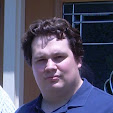Last time I talked about the first part of the process of
air brushing the parts for this kit, priming them with the Vallejo
acrylic-polyurethane surface primer, pre-shading the parts and then applying
the base color of green on the model. So what’s next? Well now we’ve got the
second color of green to apply to the model, which means I need to talk about
masking the model parts.
Ever paint a room but want to have the trip a different
color then the rest of the room? What do you do? You use painters tape to put
down a barrier so the two paints don’t go where you don’t want them to go.
Masking is basically the same thing. It’s the process of taping off a part to
ensure the paint doesn’t go where you don’t it to.
Here you can see a majority of the parts masked and with the second darker green applied on some parts and the black applied on other parts. Well… here is where I encountered my first real major problem. I thought I had properly masked out all of the spots to stop any paint from going anywhere I didn’t want it to. Well.. turns out I over thinned the black paint I used on the knee joints.
I attempted to fix my error by coming back with the original
green paint and brush painting to cover up the black bleed over. Well, brush
painting doesn’t put the paint on the same way the air brush does. So the colors
don’t exactly match. That’s why there’s
the hard line of different colors on the thigh of the model here. So not a
perfect cover up but this project was all about learning so as long as I can ID
the problem and look at why the problem occurred I’ll call it a win since it’s
something I can avoid doing next time.
So with the air brushing done I moved on to assembly. And
this is where I noticed a fairly large error I had made early on. The left leg.
More specifically the inner assembly of the left leg. See the inner part of the
leg is a support strut that serves as the ankle and the mounting for the front
and back of the lower leg itself. The pieces are specific to the right leg and
left leg respectively AND they have to go in the right way. So what did I do?
Well I put the left foot on the right strut with the strut itself upside down.
Ouch. So what did I do? Well I have glued the parts together so I couldn’t just
pop the parts apart and switch the parts. Now the problem here is that I couldn’t
actually tell that the wrong feet were on the wrong struts, at this point I
only knew that I had put one strut in upside down. So I used my pin vise to drill out the
mounting point for the ankle, cut away the few remains of plastic that was
keeping the foot on, and turned the strut around while using a piece of styrene
rod to rebuild the ankle joint.
So with that leg taken care of, I proceeded to continue
assembling the kit. Well here is where I found my largest learning point
regarding air brushing. Not so much with the technique, but in regards to
planning. See Airburshing doesn’t put down a truly uniform layer of paint. The
differences are very hard to see when it’s one continuous application across
one part. But I didn’t assemble the parts, beyond the feet and the mounting
struts for the legs, before painting them. So what does this mean? Well here is
a good example:
The front part of the shoulder armor is a lighter green then
the back half, even though they were painted at the same time with the same
paint from the same air brush. This is because of the non-uniform application
of the paint combined with the uneven application of the black paint in the
pre-shading stage. So planning your build relative to how you will paint the
kit is a necessity when you’re working with an air brush.
Nothing was substantially different here from what I did
with the Gouf save that I didn’t use any white pigment since the Zaku II was primarily
a space based mobile suit. Don’t see a lot of concrete in space after all. I mainly
used the black and grey pigments to add shading and dirt to the model. The
additional discoloration added some more definition to the model.
As an attempt to address the mis-matched feet problem I
built a flying stand for the model by cutting a length of brass rod, mounting
the rod on a platform and then drilling an accompanying hole into the crotch of
the model itself. This allowed me to position the model as if it were floating and
mostly hide the feet.
So a 30-something year old model. First real usage of an Air
brush. Applying weathering Pigments. And finally addressing several mistakes
and errors. Overall I’m glad I did this project. It has been a worthwhile
education and was a real challenge over all.















0 comments:
Post a Comment